
Animals that start with N include mammals such as the naked mole rat, narwhal and numbat; reptiles such as the Nile crocodile and northern leaf-tailed gecko; birds such as nighthawks and the nightingale; fish such as the nurse shark and nalolo; and amphibians such as newts and the natterjack toad.
On this page you’ll meet these and many other interesting animals beginning with N, together with pictures and facts on each animal.
Below many of the animals you’ll find links that you can follow for further information, pictures and videos.
Included in this list are individual species (e.g., the naked mole rat) and well-known groups of species (e.g., newts) whose names begin with N. The scientific name and conservation status are provided for each of the individual species.
Index
Scroll down to browse all of the animals, or use the index below to go straight to a particular animal.
List Of Animals Beginning With N
- Nabarlek
- Naked Mole Rat
- Nalolo
- Ñandú
- Napu
- Narwhal
- Natal Ghost Frog
- Natterjack Toad
- Nautilus
- Neddicky
- Needlefish
- Nematode
- Nene
- Neptune’s Cup Sponge
- New Guinea Singing Dog
- Newt
- Nightcrawler
- Nighthawk (Common)
- Nightingale (Common)
- Nile Crocodile
- Nilgai
- Ningaui
- Noctule Bats
- Noodlefish
- North American Beaver
- North Sulawesi Babirusa
- Northern Leaf-Tailed Gecko
- Northern Night Monkey
- Nudibranch
- Numbat
- Nunbirds
- Nunlets
- Nurse Shark
- Nuthatches
- Nutria
- Nyala
List Of Animals That Start With N
Nabarlek
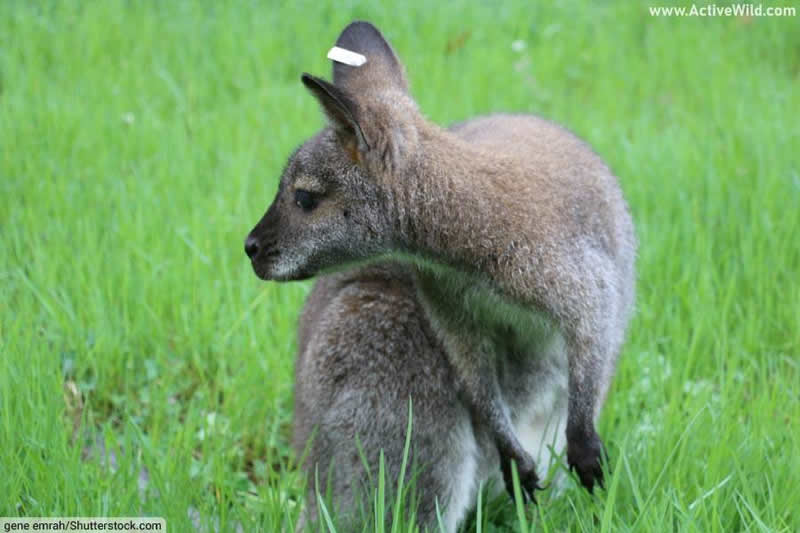
Scientific name: Petrogale concinna
Type of animal: Mammal
Family: Macropodidae
Where found: Australia
Conservation status: Endangered
The nabarlek is an Australian marsupial of genus Petrogale – a group of kangaroo-like animals known as “rock-wallabies”.
Rock-wallabies are part of the wider kangaroo family, Macropodidae, which is home not only to kangaroos, but also to wallabies, tree-kangaroos, the quokka, and other groups of related animals.
The nabarlek is found in rocky areas of north Australia, both on the mainland and on several islands. Relatively small compared to other macropods, it has a maximum head-body length of around 36 cm / 14.2 in. Its long, bushy tail is around the same length as its body.
The nabarlek has a small, declining population, and is currently endangered. Although the species’ decline is not fully understood, it is likely due to a number of factors, including the introduction of non-native species, and an increase in the frequency of bushfires.
Discover More With Active Wild
You can see more marsupials on this page: Marsupials List with Pictures & Facts
You can see more Australian animals on this page: Australian Animals List with Pictures & Facts
Return to page index
Naked Mole Rat
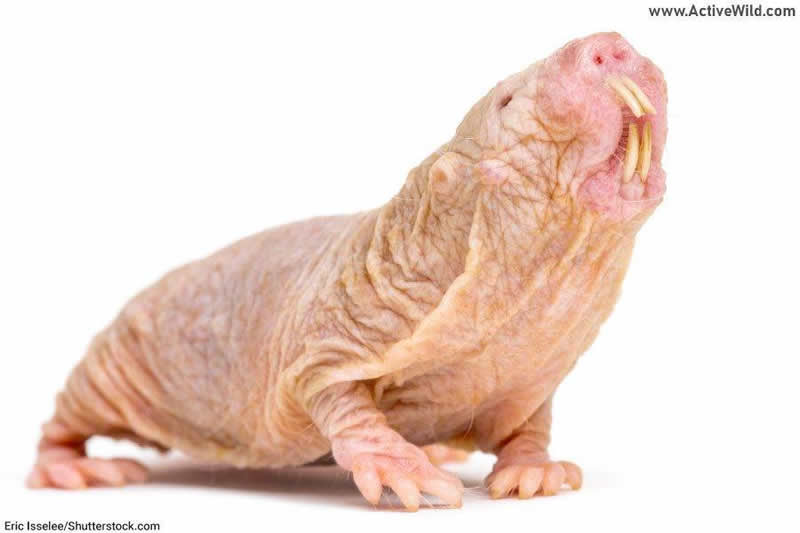
Scientific name: Heterocephalus glaber
Type of animal: Mammal
Family: Heterocephalidae
Where found: Africa
Conservation status: Least Concern
The naked mole rat is a burrowing rodent found in East Africa. This small, almost entirely bald animal spends most of its life underground. It has numerous adaptations for a subterranean lifestyle, including large incisor teeth for digging, the ability to live in extremely low-oxygen environments and being virtually cold-blooded.
This highly-social burrowing rodent lives in colonies of around 70 to 80 individuals (although colonies containing up to 250 individuals are known).
Almost uniquely for a mammal, a naked mole colony is organized like those of social insects such as bees and ants (a system known as “eusociality”).
A single “queen” naked mole rat produces all of the colony’s young; only if she dies will another female become “queen” and begin to reproduce.
Discover More With Active Wild
You can see more African animals on this page: African Animals List with Pictures & Facts
You can see more ugly animals on this page: Ugly Animals List with Pictures & Facts
Return to page index
Nalolo
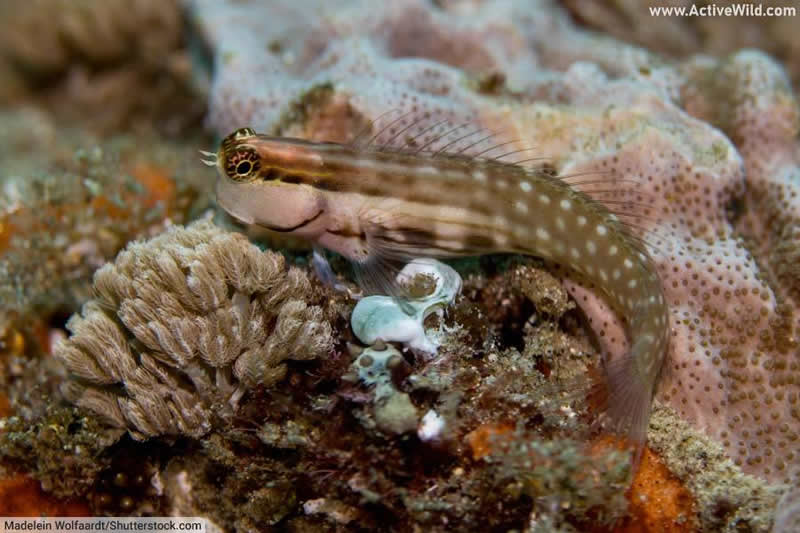
Scientific name: Ecsenius nalolo
Type of animal: Fish
Family: Blenniidae
Where found: Indian Ocean
Conservation status: Least Concern
The nalolo, also known as the nalolo blenny, is a small fish of family Blenniidae. Members of this family, which contains 400 species, are known as combtooth blennies.
The combtooth blennies are part of a larger group of fish, the order Blenniiformes, which contains the fish known as blennies and other, related, fish groups.
The nalalo, like other blennies, has a blunt head, a long, narrow body, large pectoral (side) fins and a long dorsal (back) fin. Like other combtooth blennies, it has comb-like teeth.
The species lives on coral reefs in the Indian Ocean.
Discover More With Active Wild
You can see more amazing ocean animals on this page: Ocean Animals List with Pictures & Facts
You can find out more about the marine biome on this page: Marine Biome Facts
Return to page index
Ñandú
Type of animal: Bird
Family: Rheidae
Where found: South America
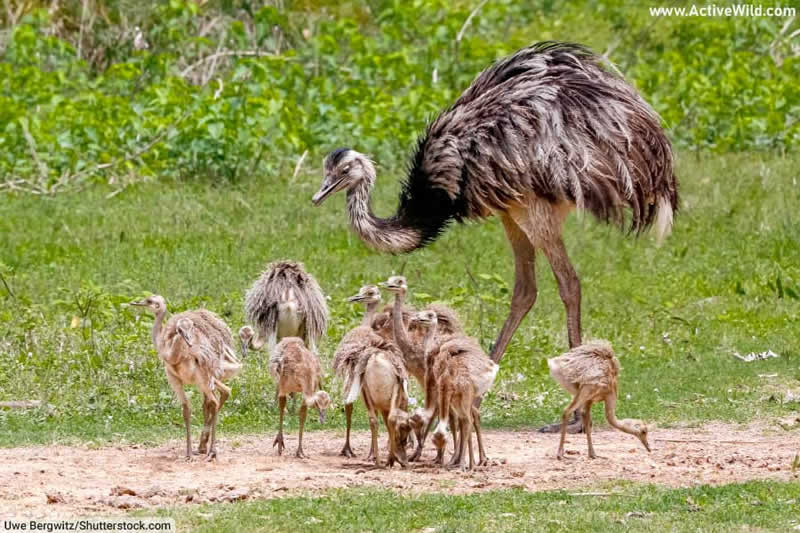
Ñandú is another name for a rhea. Rheas are large, flightless birds found in grasslands and pampas in South America.
There are two species of rhea: the greater rhea Rhea americana (conservation status: Near Threatened); and the lesser rhea Rhea pennataI (also known as Darwin’s rhea, ñandú petiso, or ñandú del norte) (conservation status: Least Concern).
Some authorities recognize a third rhea species, the Puna rhea Rhea tarapacensis (conservation status: Near Threatened).
Rheas belong to a group of flightless birds known as ratites, which also contains ostriches, the emu, cassowaries and kiwis. The breastbones of ratites lack a keel, which is the part of the skeleton to which the wing muscles of flying birds are attached.
The greater rhea is the world’s seventh-largest bird by weight. Although larger in size than the emperor penguin (the world’s sixth largest living bird), the greater rhea weighs less on average.
The lesser rhea is the world’s tenth-largest bird by weight.
Discover More With Active Wild
You can find out more about birds on this page: Birds: The Ultimate Guide
You can see more amazing birds on this page: Amazing Birds
Return to page index
Napu
Scientific name: Tragulus napu
Type of animal: Mammal
Family: Tragulidae
Where found: Asia;321`3
Conservation status: Least Concern
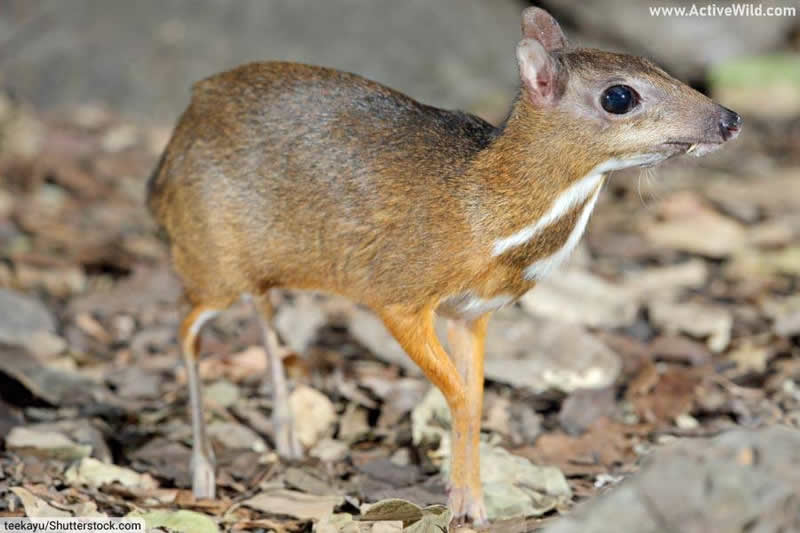
Napu is one of several names given to the greater mouse-deer. (Other names for the species are the greater oriental chevrotain, and the greater Malay chevrotain).
This small, hooved mammal inhabits tropical rainforests in Southeast Asia. It is found on the Malay Peninsula, parts of the wider Southeast Asian mainland, and on the islands of Sumatra and Borneo and numerous other, smaller islands.
Discover More With Active Wild
You can see more amazing rainforest animals on this page: Rainforest Animals List with Pictures & Facts
You can see more Asian animals on this page: Asian Animals Pictures & Facts
Return to page index
Narwhal
Scientific name: Monodon monoceros
Type of animal: Mammal
Family: Monodontidae
Where found: The Arctic
Conservation status: Least Concern

The narwhal is a member of a group of marine mammals known as toothed whales (the scientific name for this group is Odontoceti).
Other members of this group include beaked whales, sperm whales, dolphins, orcas, and the narwhal’s closest living relative, the beluga whale.
The male narwhal is one of the world’s most distinctive whales due to the long, spiraled tusk that projects forwards from its head. A small percentage of female narwhales also have a tusk.
A narwhal’s tusk is actually an elongated tooth that grows through the animal’s top lip.
Narwhals are found in the Arctic Ocean.
Discover More With Active Wild
You can discover more about the narwhal on this page: Narwhal Facts
You can see more Arctic animals on this page: Arctic Animals Pictures & Facts
You can see more amazing ocean animals on this page: Ocean Animals List with Pictures & Facts
Return to page index
Natal Ghost Frog
Scientific name: Hadromophryne natalensis
Type of animal: Amphibian
Family: Heleophrynidae
Where found: Africa
Conservation status: Least Concern
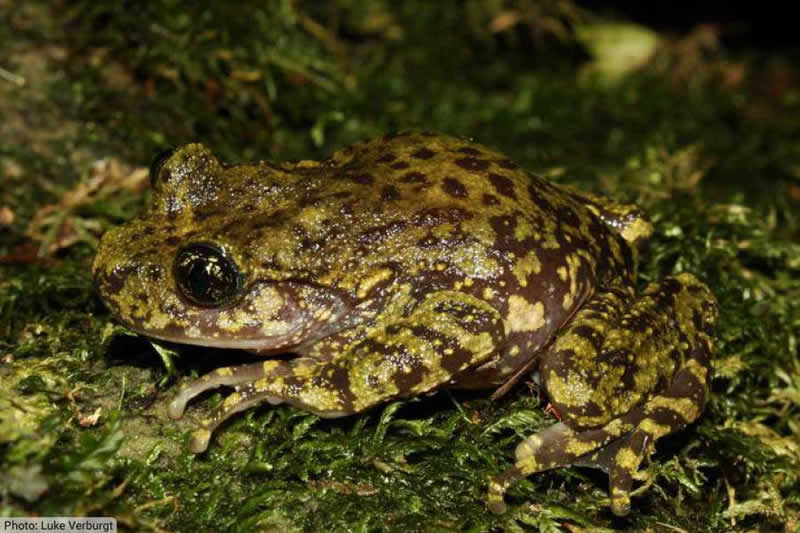
The Natal ghost frog is an amphibian found in the southern African countries of South Africa, Lesotho and Swaziland. It lives in fast-flowing streams in mountainous regions. Because its tadpoles take two years to develop, the species is only found in permanent streams.
Although the introduction of the non-native trout can have a negative effect on local Natal ghost frog populations, the species is common.
The Natal ghost frog is one of seven species of ghost frog. These southern African amphibians make up the family Heleophrynidae.
Discover More With Active Wild
You can find out more about amphibians on this page: Amphibians: The Ultimate Guide
You can see more African animals on this page: African Animals Pictures & Facts
Return to page index
Natterjack Toad
Scientific name: Epidalea calamita
Type of animal: Amphibian
Family: Bufonidae
Where found: Europe
Conservation status: Least Concern
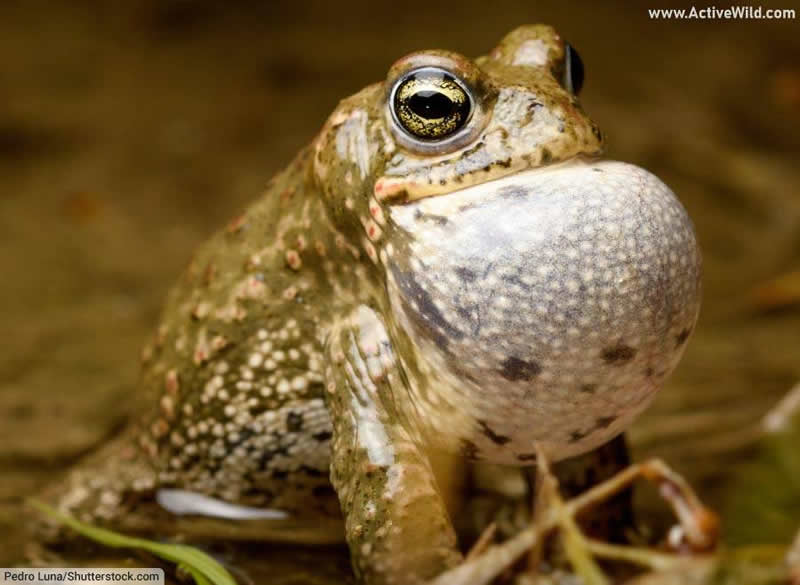
The natterjack toad belongs to the family Bufonidae, whose 600 plus members are known as “true toads”.
The natterjack toad is found in heathlands and sand dunes throughout much of Europe. It can be distinguished from the similarly-sized common toad by the presence of a narrow yellow line running along its back.
During the spring, male natterjack toads group together and call throughout the night. Their calls, which are amplified by a pouch of skin under the chin, can be heard up to a mile away.
Discover More With Active Wild
You can find out more about amphibians on this page: Amphibians: The Ultimate Guide
Discover more amphibians on this page: Amphibians List with Pictures & Facts
Return to page index
Nautilus
Type of animal: Cephalopod Mollusk
Family: Nautilidae
Where found: Indo-Pacific
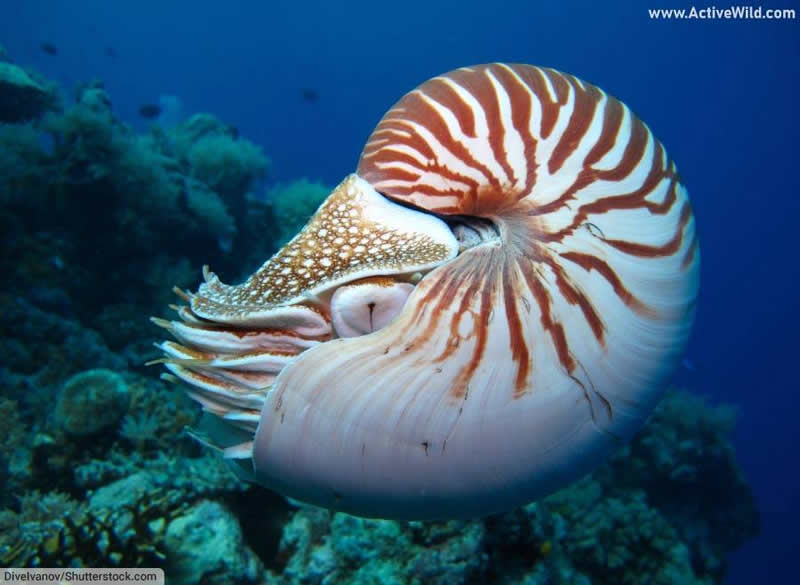
A nautilus is a marine mollusk with a distinctive, spiraled shell. Six species of nautilus are currently recognized, although recent research suggests that there may in fact be only three species.
All nautiluses are found in the Indo-Pacific region – a region that comprises tropical areas of the Indian Ocean and the Central and the Western and Central Pacific Ocean.
A nautilus’s shell contains numerous chambers. The animal itself lives in the last chamber – the other chambers are used to control the animal’s buoyancy. The nautilus changes depth by adjusting the ratio of fluid to gas in its shell.
Depending on species, a nautilus has up to 90 tentacle-like appendages, with which it can grasp prey.
Nautiluses are the most primitive members of a group of mollusks called cephalopods. Other cephalopods include octopuses, cuttlefish and squids.
Unlike most cephalopods, nautiluses are unable to squirt ink.
Nautiluses have existed for millions of years. Over that time, they have changed very little, and for this reason belong to a group of animals known as “living fossils”.
Discover More With Active Wild
You can see more amazing ocean animals on this page: Ocean Animals List with Pictures & Facts
You can find out more about the marine biome on this page: Marine Biome Facts
Return to page index
Neddicky
Scientific name: Cisticola fulvicapilla
Type of animal: Bird
Family: Cisticolidae
Where found: Africa
Conservation status: Least Concern
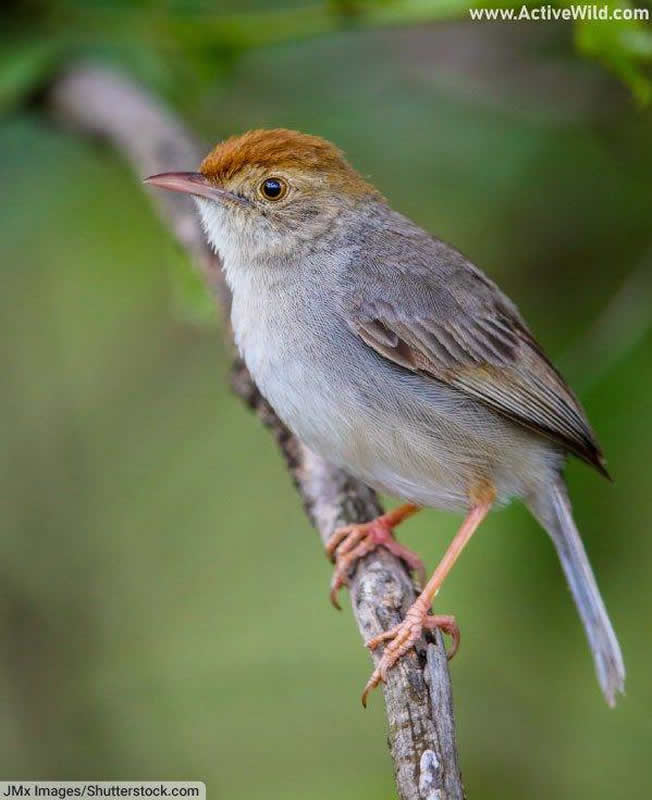
The neddicky is a small grey and reddish-brown bird found in Africa. The species is also known as the “piping cistocola”. It belongs to the family Cisticolidae.
The range of the neddicky covers much of sub-Saharan Africa. The species is common in savannas and shrubland habitats, and currently unthreatened.
Discover More With Active Wild
You can see more African animals on this page: African Animals Pictures & Facts
You can find out more about birds on this page: Birds: The Ultimate Guide
Return to page index
Needlefish
Type of animal: Fish
Family: Belonidae
Where found: Tropical, subtropical and warm temperate waters worldwide
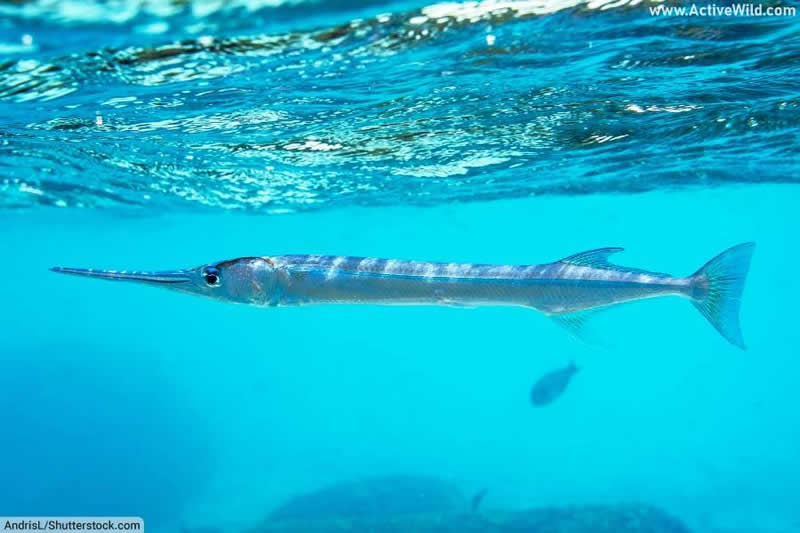
Needlefish are a family of fish with streamlined bodies and long, narrow, tooth-filled jaws.
Most of the 38-odd species of needlefish are found in tropical, subtropical and warm temperate oceans throughout much of the world. Some needlefish live in freshwater habitats.
Needlefish are usually found near the surface of the water. They prey on other fish, and are capable of swimming at high speeds and leaping out of the water.
Due to their leaping behavior, the fast-swimming, sharp-jawed fish can be dangerous to humans. In some areas, they are considered to be more dangerous than sharks.
The biggest species of needlefish is the houndfish, or crocodile needlefish, which grows up to 15 m / 5 ft. in length.
Discover More With Active Wild
You can see more amazing ocean animals on this page: Ocean Animals List with Pictures & Facts
You can find out more about the marine biome on this page: Marine Biome Facts
Return to page index
Nematode
Where found: Worldwide
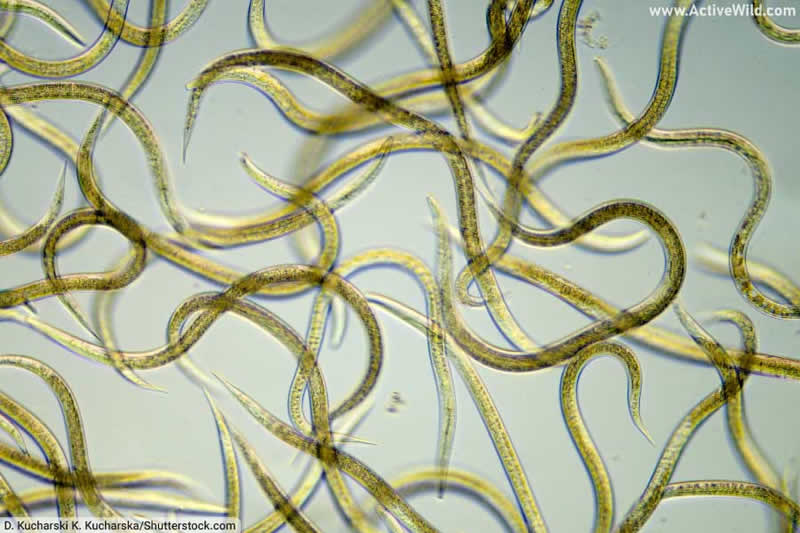
Nematodes, which are also known as roundworms, are a large group of mainly microscopic animals with wormlike bodies.
Although most nematodes are microscopic, a species of nematode that lives inside the sperm whale can reach lengths of up to 13m (43 ft.).
Nematodes are found in virtually every habitat on Earth. There are more nematodes than any other type of animal; it is estimated that around 80% of all animals are nematodes.
Many nematodes are parasites, living either on, or inside, other organisms.
Discover More With Active Wild
You can find out more about the different types of animal on this page: Types of Animal
Nene
Scientific name: Branta sandvicensis
Type of animal: Bird
Family: Anatidae
Where found: Hawaii
Conservation status: Near Threatened
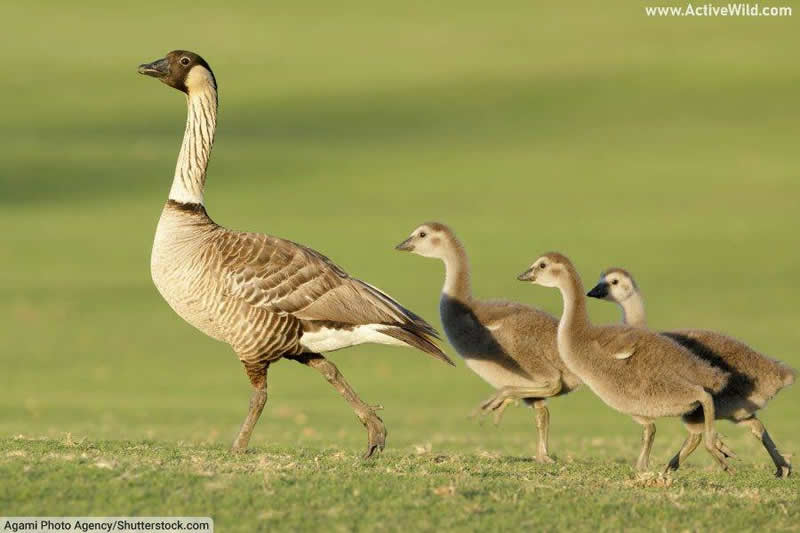
The nene, or nënë, is a member of the duck, goose and swan family, Anatidae. It is found only on the Hawaiian Islands.
The nene resembles the Canada goose, from which it is thought to have evolved, but has a streaked, rather than black neck, and yellow-brown cheeks.
Unlike those of all other geese, the feet of the nene are not fully webbed.
The nene is the official bird of the state of Hawaii.
Discover More With Active Wild
You can find out more about birds on this page: Birds: The Ultimate Guide
You can find out more about the different types of bird on this page: Types of Birds
Return to page index
Neptune’s Cup Sponge
Scientific name: Cliona patera
Type of animal: Sponge
Family: Clionaidae
Where found: Asia
Conservation status: Unassessed

The Neptune’s cup sponge is a large species of sponge found in oceans around Southeast Asia.
Sponges are very basic animals that lack a nervous system and organs. Although in their adult state sponges can’t move, as larvae they are able to swim.
The Neptune’s cup sponge grows up to a meter in both height and width. The species was once believed to have become extinct due to overharvesting, but living specimens have recently been discovered near Singapore.
Discover More With Active Wild
Although sponges might seem more like plants than animals, they are animals and belong in the animal kingdom. You can find out more about the different types of animals on this page: Types of Animals
Return to page index
New Guinea Singing Dog
Scientific name: Canis familiaris / Canis lupus familiaris / Canis hallstromi
Type of animal: Mammal
Family: Canidae
Where found: New Guinea
Conservation status: Domestic
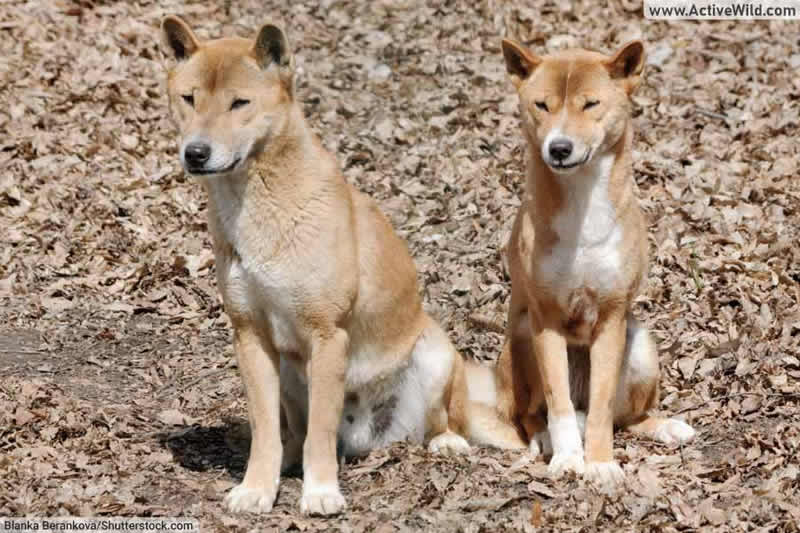
The New Guinea singing dog is a dog breed found on the island of New Guinea, where it lives both with humans, and in feral packs.
A large dog, the New Guinea singing dog has a golden coat, pale face and undersides, bushy tail and upright, alert ears. It is similar in appearance to the closely-related dingo.
The classification of the New Guinea singing dog is debated among zoologists. Some believe it to be a subspecies of wolf, others believe it to be a subspecies of dingo, while others consider it to be a separate species in its own right.
The New Guinea singing dog is known for its distinctive melodic howl.
Discover More With Active Wild
You can see more Asian animals on this page: Asian Animals Pictures & Facts
You can see a list of every dog species on this page: Dog Species List with Pictures & Facts
Return to page index
Newt
Type of animal: Amphibian
Family: Salamandridae
Where found: North America, Europe, Africa, Asia
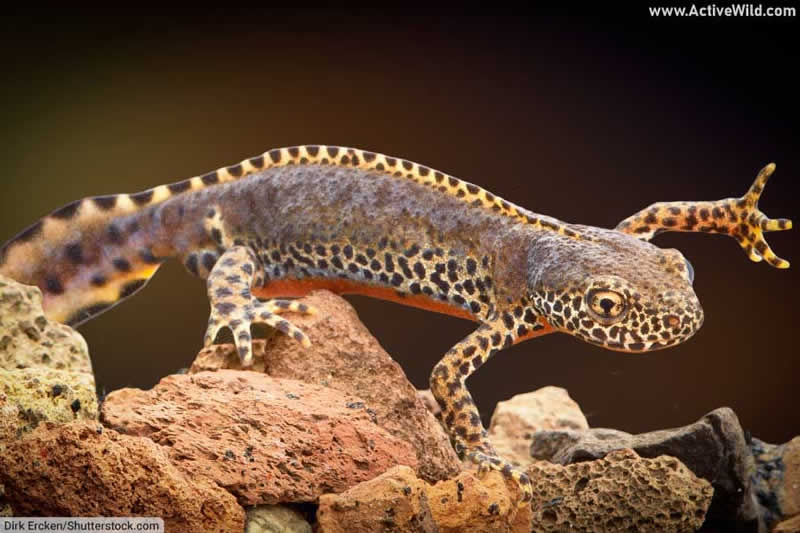
A newt is a small amphibian with a long, lizard-like body, two pairs of short legs and a long tail.
Newts are members subfamily Pleurodelinae, which is part of the salamander family, Salamandridae. The skin of a newt is slightly rougher than that of other salamanders.
Like most other amphibians, newts begin life as aquatic larvae, before metamorphosizing into their terrestrial (land-living) adult forms.
The 105 recognized species of newt are distributed throughout North America, Europe, North Africa and Asia.
Discover More With Active Wild
You can find out more about amphibians on this page: Amphibians: The Ultimate Guide
Discover more amphibians on this page: Amphibians List with Pictures & Facts
Return to page index
Nightcrawler
Scientific name: Lumbricus terrestris
Type of animal: Annelid
Family: Lumbricidae
Where found: Europe, North America
Conservation status: Unassessed
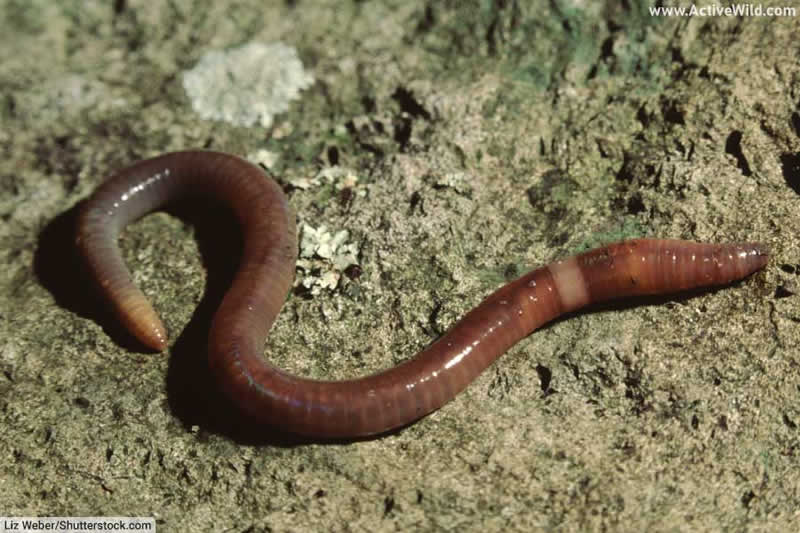
The nightcrawler is a species of earthworm native to Europe and introduced to North America.
When extended, the body of the nightcrawler can reach lengths of up to 35 cm / 13.8 in., making it one of the largest earthworm species. The species is reddish-brown in color, and more likely to be seen on the surface than other earthworms.
Hair-like projections known as setae anchor parts of the worm’s segmented body as it contracts and extends, allowing the worm to move.
Discover More With Active Wild
Worms are animals, just like dogs, sharks and humans! You can find out more about the different types of animals on this page: Types of Animals
Return to page index
Nighthawk (Common)
Scientific name: Chordeiles minor
Type of animal: Bird
Family: Caprimulgidae
Where found: North America, South America
Conservation status: Least Concern
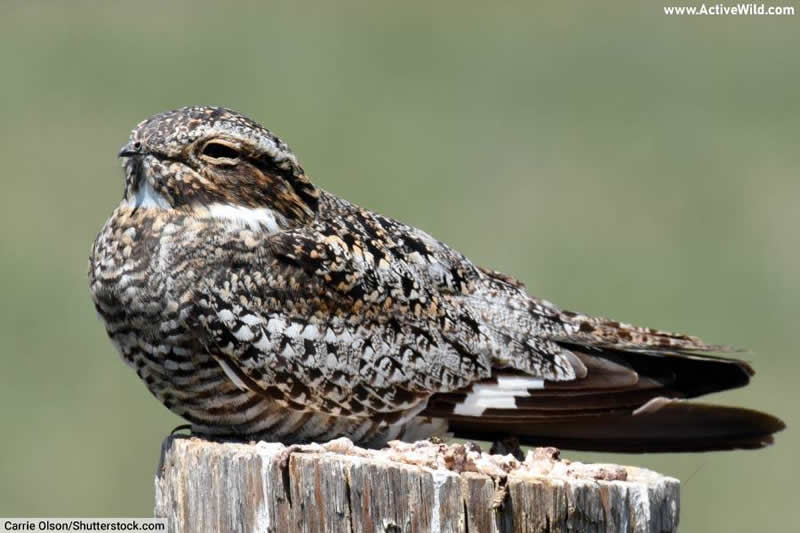
The common nighthawk is a nocturnal, insect-eating bird found in North and South America. The species is one of several birds known as nighthawks.
Together, the nighthawks make up the subfamily Chordeilinae, which is part of the nightjar family, Caprimulgidae.
The cryptic, black, gray and brown coloration of the nighthawk provides excellent camouflage during the day.
Like other nighthawks, the common nighthawk has long, pointed wings and a slightly forked tail. When flying, a white bar on each wing is visible. The species hunts by sight, capturing moths and other flying insects in mid-air.
Discover More With Active Wild
You can find out more about birds on this page: Birds: The Ultimate Guide
You can find out about the different types of bird on this page: Types Of Bird
You can see more nocturnal animals on this page: Nocturnal Animals List with Pictures & Facts
Return to page index
Nightingale (Common)
Scientific name: Luscinia megarhynchos
Type of animal: Bird
Family: Muscicapidae
Where found: Europe, Africa
Conservation status: Least Concern
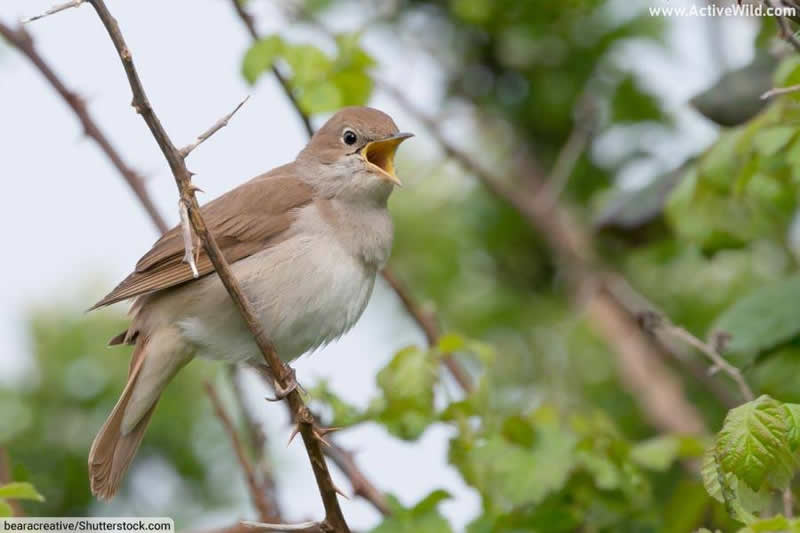
The nightingale is a small brown bird known for the beauty of its song, which is frequently heard at night, as well as during the day.
This inconspicuous brown bird is slightly smaller to the European robin, to which it is related (both species belong to the Old World flycatcher family, Muscicapidae).
The nightingale breeds in woodlands in Europe and parts of Asia during the summer, and migrates to Africa during the winter.
Discover More With Active Wild
You can find out more about birds on this page: Birds: The Ultimate Guide
You can find out about the different types of bird on this page: Types Of Bird
Return to page index
Nile Crocodile
Scientific name: Crocodylus niloticus
Type of animal: Reptile
Family: Crocodylidae
Where found: Africa
Conservation status: Least Concern
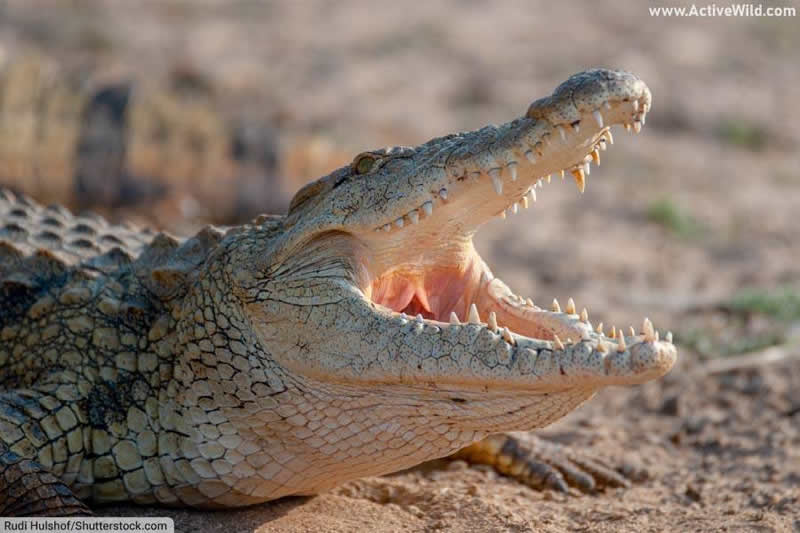
The Nile crocodile is the second largest reptile in the world; only the saltwater crocodile is larger.
This large, and highly aggressive, crocodile is found throughout most of Sub-Saharan Africa (the area of Africa south of the Sahara desert). The species is found as far north as Egypt, where it is found in the river after which it is named.
Like all crocodiles, the Nile crocodile is an ambush predator. It lies in wait for its prey to approach before launching an explosive attack, dragging its victim into the water with its strong jaws. The Nile crocodile is responsible for hundreds of human casualties each year.
Discover More With Active Wild
You can see more African animals on this page: African Animals Pictures & Facts
Discover more African crocodiles on this page: African Crocodiles
You can find out more about reptiles on this page: Reptiles – The Ultimate Guide
Return to page index
Nilgai
Scientific name: Boselaphus tragocamelus
Type of animal: Mammal
Family: Bovidae
Where found: Asia
Conservation status: Least Concern
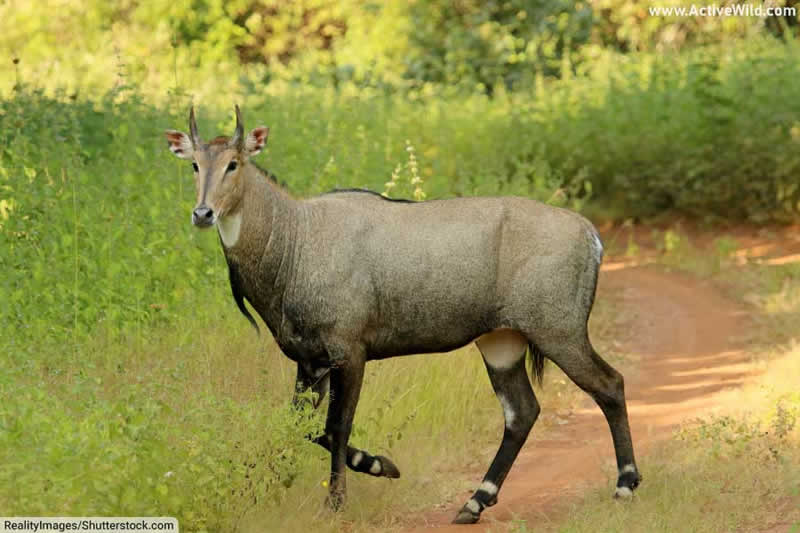
The nilgai is a large antelope found in India, Nepal and Pakistan.
Weighing up to 288 kg / 635 lb., the nilgai is the largest antelope found in Asia. Its large body has a characteristic profile, sloping downwards from its tall shoulders, and its legs are relatively thin. There is a white patch on the throat.
Only male nilgai have horns, which reach lengths of up to 24 cm / 9,45 in.
The species lives in dry, open habitats such as shrublands and grasslands. In parts of India, the species is viewed as a pest by farmers.
Discover More With Active Wild
You can see more Asian animals on this page: Asian Animals Pictures & Facts
Discover more amazing mammals on this page: Mammals List With Pictures & Facts
Return to page index
Ningaui
Type of animal: Mammal
Family: Dasyuridae
Where found: Australia
Conservation status: Least Concern
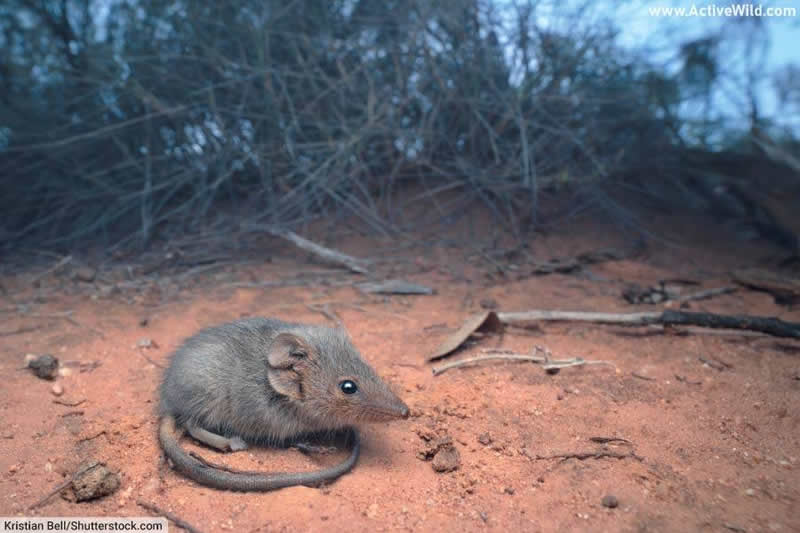
Ningauis are small marsupials that resemble shrews. They are among the world’s smallest marsupials.
There are three ningaui species: the Wongai ningaui (Ningaui ridei); Pilbara ningaui (Ningaui timealeyi); and Southern ningaui (Ningaui yvonneae). All three are found in Australia, where they live in arid habitats such as deserts and grasslands.
Together, the three ningauis make up the genus ningaui, which is part of the family Dasyuridae. Members of this family are known as “marsupial carnivores” on behalf of their largely carnivorous diet.
Most dasyurids, like the ningaui, are small insectivores, but the family is also home to the dog-sized, meat-eating, Tasmanian devil.
Discover More With Active Wild
You can see more marsupials on this page: Marsupials List with Pictures & Facts
You can see more Australian animals on this page: Australian Animals List with Pictures & Facts
Return to page index
Noctule Bats
Type of animal: Mammal
Family: Vespertilionidae
Where found: Europe, Asia, North Africa
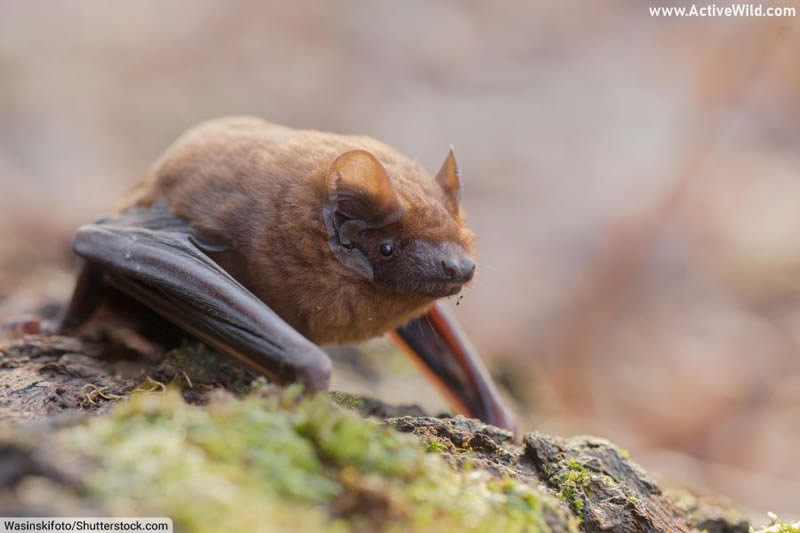
Noctule bats are bats of genus Nyctalus. The eight species of noctule bat are distributed between Europe, Asia and North Africa.
With a wingspan of up to 46 cm / 18 in., the largest noctule bat is the greater, or giant noctule bat Nyctalus lasiopterus. This species is one of the few bats able to hunt and capture birds on the wing.
Despite being found across an area that stretches from Portugal to Russia and south into North Africa, the giant noctule bat is rare and its conservation status is “Vulnerable”.
The common noctule bat, Nyctalus noctule, is more common and is not currently threatened. Only female common noctule bats migrate, flying north to give birth in the spring and early summer. Although mating takes place in late summer, the eggs are only fertilized in spring the following year.
Discover More With Active Wild
You can find out more about bats on this page: Bats – The Ultimate Guide
They might have wings, but bats are mammals (not birds!). You can discover the different types of mammals on this page: Types of Mammals
Return to page index
Noodlefish
Type of animal: Fish
Family: Salangidae
Where found: Asia
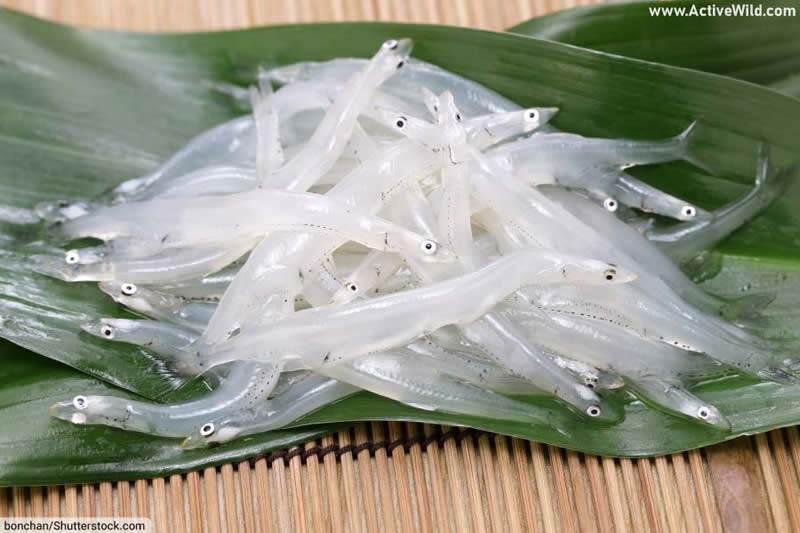
Noodlefish are small fish with narrow, elongated bodies. All 20 species of noodlefish are found in eastern Asia.
Depending on the species, noodlefish are found in both freshwater and marine environments, with some species migrating between the two aquatic habitats as part of their life-cycle.
Noodlefish, which are also known as Salangidae, or icefish, are a common food fish, and hunted commercially. Their slender, translucent bodies can resemble noodles in some dishes.
Discover More With Active Wild
You can see more Asian animals on this page: Asian Animals Pictures & Facts
Return to page index
North American Beaver
Scientific name: Castor canadensis
Type of animal: Mammal
Family: Castoridae
Where found: North America
Conservation status: Least Concern
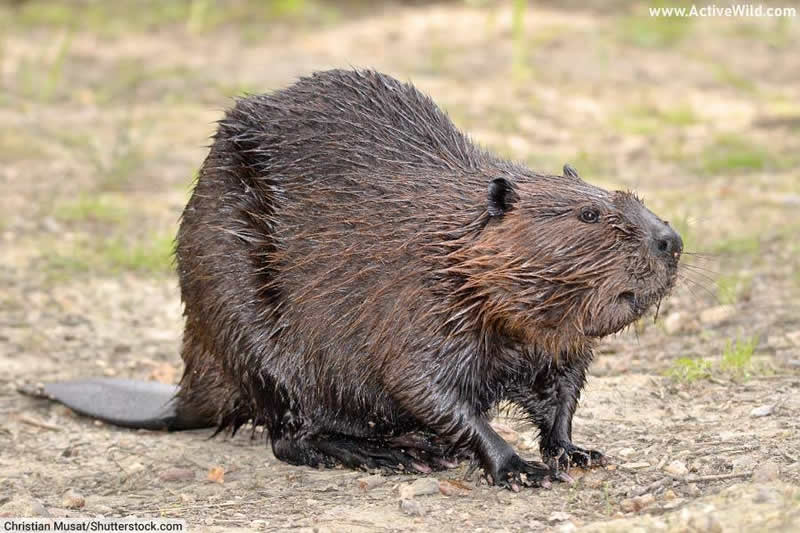
The North American beaver is a large rodent found in North America. Although the average weight of a North American beaver is slightly less than that of the only other beaver species, the European beaver, its maximum-known size is greater, making it the world’s second-largest rodent.
(The world’s largest rodent is the capybara.)
The North American beaver has a semi-aquatic lifestyle, spending much of its time in the water. Adaptations for this lifestyle include a paddle-like tail and webbed hind feet.
Beavers build dams out of sticks and logs. These structures create ponds in which the beavers can swim and forage in safety. These ponds also provide a habitat for other animals, such as fish and birds.
The presence of beavers can be highly-beneficial for the wider ecosystem, as beaver dams help to prevent soil erosion and flooding.
Discover More With Active Wild
You can find out more about the North American beaver on this page: North American Beaver Facts
Discover more about rodents on this page: Rodents – The Ultimate Guide
Discover more amazing mammals on this page: Mammals List With Pictures & Facts
Return to page index
North Sulawesi Babirusa
Scientific name: Babyrousa celebensis
Type of animal: Mammal
Family: Suidae
Where found: Asia
Conservation status: Vulnerable
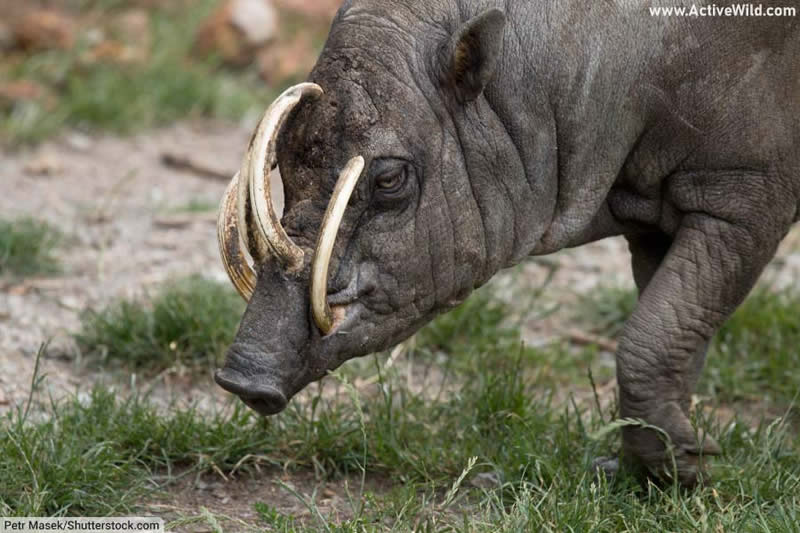
The North Sulawesi babirusa is a member of the pig family, Suidae, found on the Indonesian island of Sulawesi and a number of neighboring islands.
The species is one of four babirusa species, which together comprise the genus Babyrousa.
Like all male babirusas, the male North Sulawesi babirusa has an upper and lower pair of long, curved tusks. The tusks are elongated canine teeth.
The babirusa’s upper tusks grow upwards from the animal’s upper jaw, piercing the roof of the mouth and emerging from the top of the snout.
The tusks continue to curve backwards after emerging from the snout, and in some individuals eventually pierce the skull.
Discover More With Active Wild
You can see more Asian animals on this page: Asian Animals Pictures & Facts
Discover more amazing mammals on this page: Mammals List With Pictures & Facts
Return to page index
Northern Leaf-Tailed Gecko
Scientific name: Saltuarius cornutus
Type of animal: Reptile
Family: Carphodactylidae
Where found: Australia
Conservation status: Least Concern
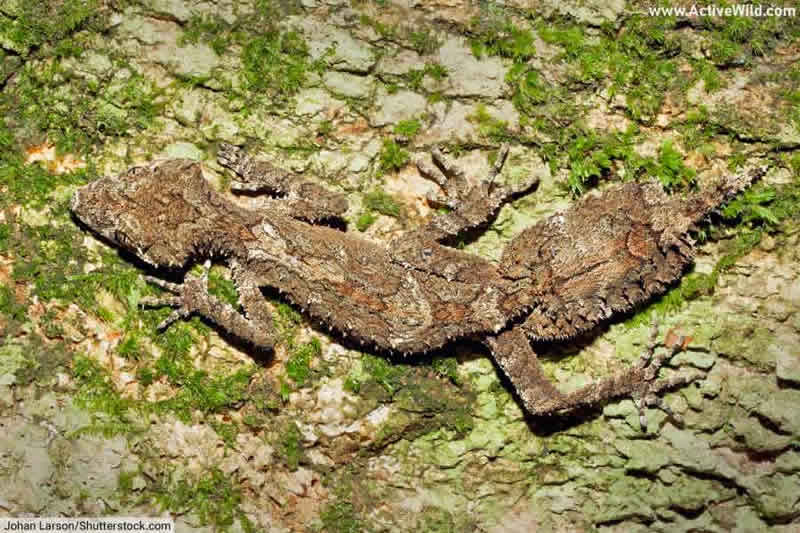
The northern leaf-tailed gecko is a species of lizard found in rainforests in Queensland, Australia.
With a maximum length of 14 cm / 5.5 in., the northern leaf-tailed gecko is Australia’s largest gecko. The species is one of seven leaf-tailed geckos, all of which are found in Australia.
The leaf-tailed geckos are named for their wide, leaf-shaped tails. Together, the seven species make up the genus Saltuarius.
The northern leaf-tailed gecko is arboreal (it lives in trees). Although it lacks the adhesive pads found on the feet of most other geckos, it is able to climb using its clawed toes.
Geckos are lizards in the infraorder Gekkota. Geckos lack eyelids and as a result are unable to blink. Instead, they clean their eyes with their tongues.
Discover More With Active Wild
You can see more Australian animals on this page: Australian Animals List with Pictures & Facts
Discover more about reptiles on this page: Reptiles – The Ultimate Guide
Return to page index
Northern Night Monkey
Scientific name: Aotus trivirgatus
Type of animal: Mammal
Family: Aotidae
Where found: South America
Conservation status: Least Concern
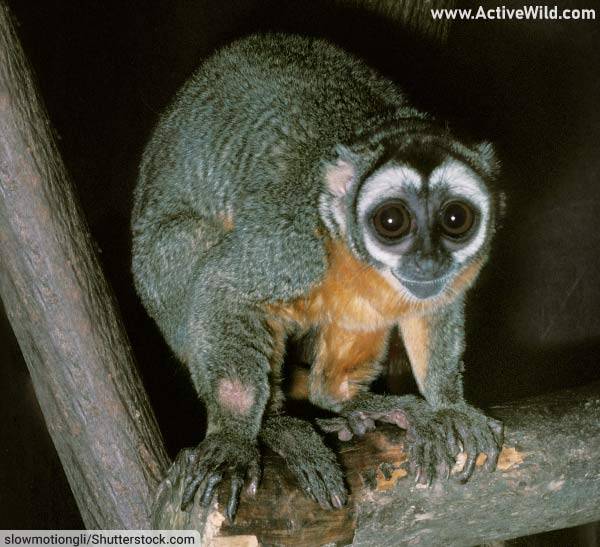
The northern night monkey, also known as the three-striped night monkey, is a species of night monkey found in Venezuela and northern Brazil. It lives in several forest habitats, including rainforests.
Night monkeys, which are also known as ‘owl monkeys’, are the only truly nocturnal monkeys. The eleven species of night monkey make up the family Aotidae.
Night monkeys have large brown eyes that enable them to see in low light conditions. Night monkeys are primarily frugivorous (fruit-eating), but will also feed on other plant matter and insects.
Discover More With Active Wild
You can find out more about monkeys on this page: Monkeys – The Ultimate Guide
Monkeys (and humans) are primates. You can find out more about primates on this page: Primates – The Ultimate Guide
You can see more nocturnal animals on this page: Nocturnal Animals Pictures & Facts
Return to page index
Nudibranch
Type of animal: Mollusk (Gastropod)
Order: Nudibranchia
Where found: Oceans worldwide
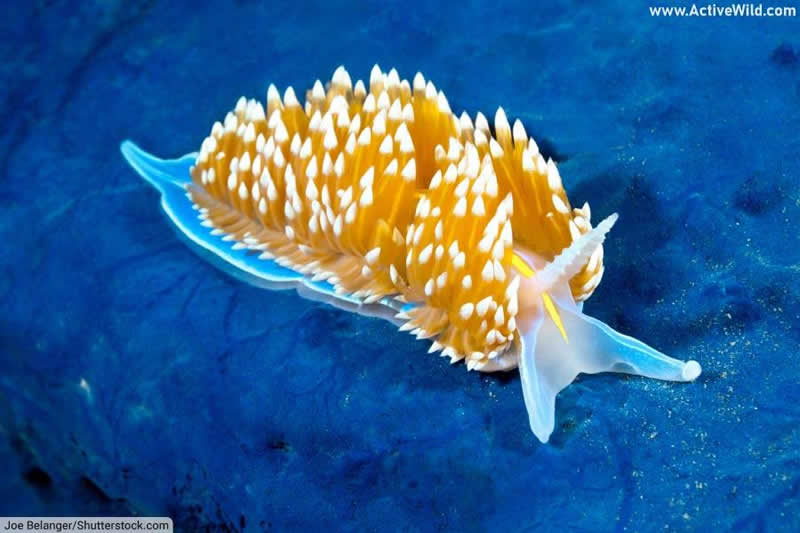
Nudibranchs are a large group of marine mollusks found in oceans all around the world. Nudibranchs, along with several other, similar-looking animals, are also known as “sea slugs”.
Nudibranchs make up the order Nudibranchia. Many of the 3,000-odd nudibranch species are striking-looking animals, with bright colors and a variety of weird and wonderful body shapes.
Discover More With Active Wild
You can see more amazing ocean animals on this page: Ocean Animals List with Pictures & Facts
You can find out more about the marine biome on this page: Marine Biome Facts
Return to page index
Numbat
Scientific name: Myrmecobius fasciatus
Type of animal: Mammal
Family: Myrmecobiidae
Where found: Australia
Conservation status: Endangered
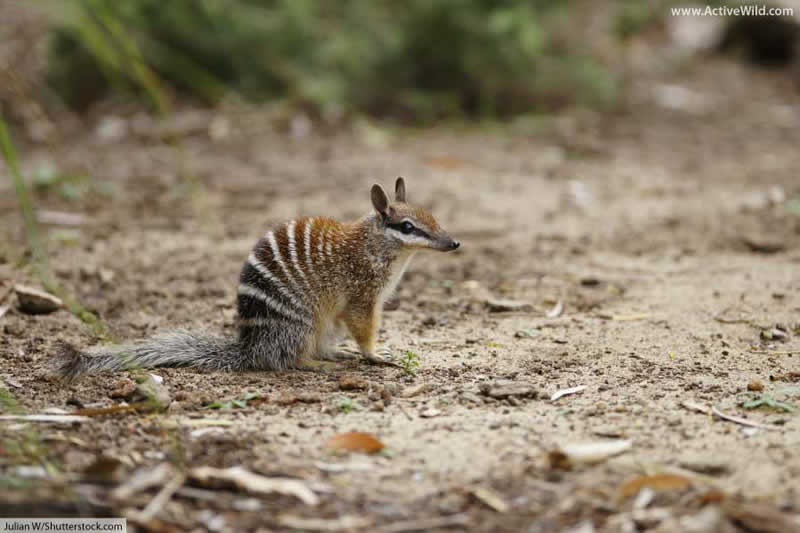
The numbat is an endangered Australian marsupial. This distinctive animal has a long body and tail, pointed face, red-brown fur, and black and white stripes across its back. It grows to lengths of up to 45 cm / 17.7 in., including the tail.
An insectivore (insect-eater), the numbat feeds almost exclusively on termites. It captures its prey with its long, sticky tongue.
Once found throughout southern Australia, the numbat’s range is today restricted to a small number of areas in Western Australia. The species has also been re-introduced in the states of South Australia and New South Wales.
Today, there are fewer than 1,000 adult numbats left in the wild. The main threat to the numbat is the presence of non-native predators such as the red fox and feral cats.
Discover More With Active Wild
You can see more marsupials on this page: Marsupials List with Pictures & Facts
You can see more Australian animals on this page: Australian Animals List with Pictures & Facts
Return to page index
Nunbirds
Type of animal: Bird
Family: Bucconidae
Genus: Monasa
Where found: South America, Central America
Conservation status: Least Concern
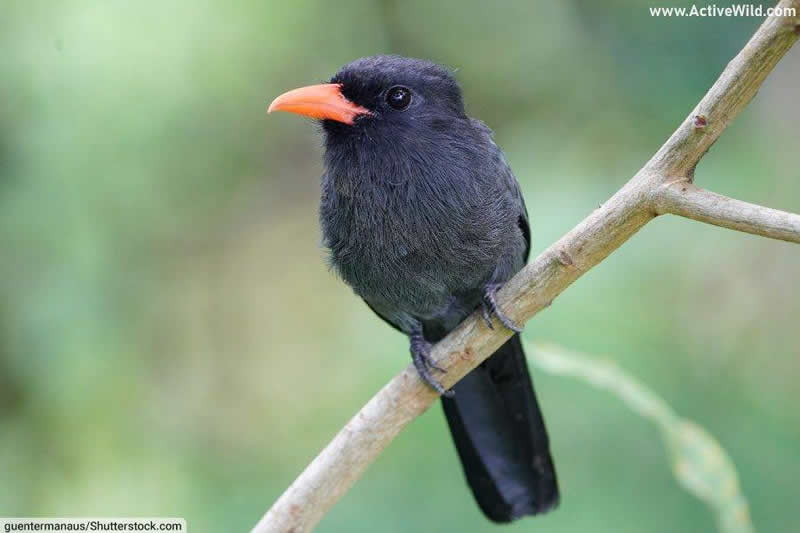
Nunbirds are four species of insectivorous (insect-eating) birds found in tropical South and Central America. Nunbirds have black plumage, and all but the yellow-billed nunbird have orange bills.
The four nunbirds make up the genus Monasa, which is part of the family Bucconidae. Birds in this family are known as “puffbirds” on behalf of the fluffy plumage of many species in the group.
Nunbirds typically inhabit forest and woodland habitats, and are present in several parts of the Amazon rainforest.
All four nunbirds currently have the conservation status “Least Concern”, and are not presently under threat.
Discover More With Active Wild
You can find out more about birds on this page: Birds: The Ultimate Guide
You can find out about the different types of bird on this page: Types Of Bird
You can see more Amazon rainforest animals on this page: Amazon Rainforest Animals List
Return to page index
Nunlets
Type of animal: Bird
Family: Bucconidae
Genus: Nonnula
Where found: South America, Central America
Conservation status: Least Concern

Nunlets are six species of insectivorous (insect-eating) birds found in tropical South and Central America. Together, they make up the genus Nonnula, which is part of the puffbird family, Bucconidae.
All nunlets are small birds with relatively long, heavy beaks. They typically have pale undersides, rufous chests, and darker brown back and wings.
The six species of nunlets are not currently thought to be threatened, and all have the conservation status “Least Concern”.
Discover More With Active Wild
You can find out more about birds on this page: Birds: The Ultimate Guide
You can find out about the different types of bird on this page: Types Of Bird
Return to page index
Nurse Shark (Atlantic)
Scientific name: Ginglymostoma cirratum
Type of animal: Fish
Family: Ginglymostomatidae
Where found: Atlantic Ocean
Conservation status: Vulnerable
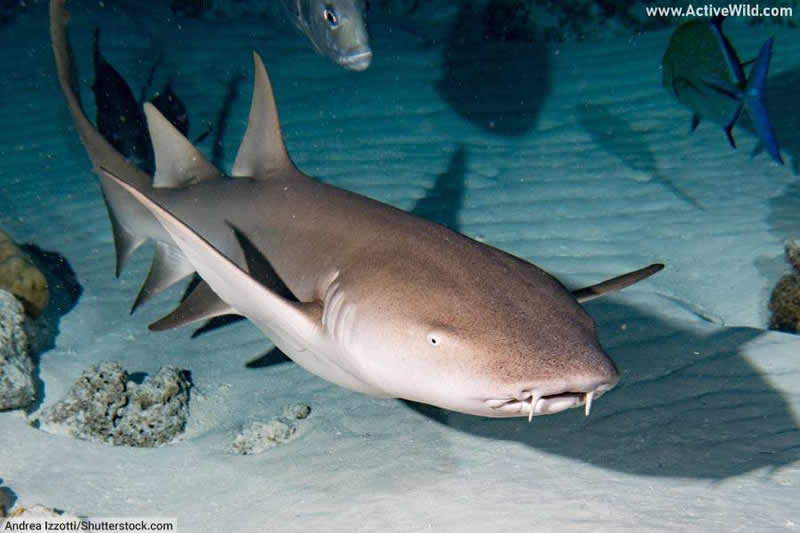
The nurse shark is a mid-sized, yellow-brown-colored shark with an elongated tail fin, blunt head, and two barbels above the mouth. It is found in tropical and subtropical waters, where it inhabits coral reefs, shelves, rocky areas and seagrass flats.
During the day, the nurse shark rests on the seabed in groups of up to 40 individuals. During the night, it forages for food in the sediment.
The nurse shark is able to create an incredibly strong suction force (among the strongest known of all marine vertebrates), which can pull gastropods from their shells. Shelled prey is also crushed between the shark’s numerous small, serrated teeth.
The nurse shark’s diet includes crustaceans such as spiny lobsters, stingrays, squid and bony fish.
The Pacific nurse shark, Ginglymostoma unami, is today considered a separate species. Due to fishing pressure and the loss of the mangrove habitats in which the infant shark develops, the Pacific nurse shark is an endangered species.
Discover More With Active Wild
Discover more amazing sharks on this page: Sharks List with Pictures & Facts
You can see more amazing ocean animals on this page: Ocean Animals List with Pictures & Facts
You can find out more about the marine biome on this page: Marine Biome Facts
Return to page index
Nuthatches
Type of animal: Bird
Family: Sittidae
Where found: Eurasia, North America
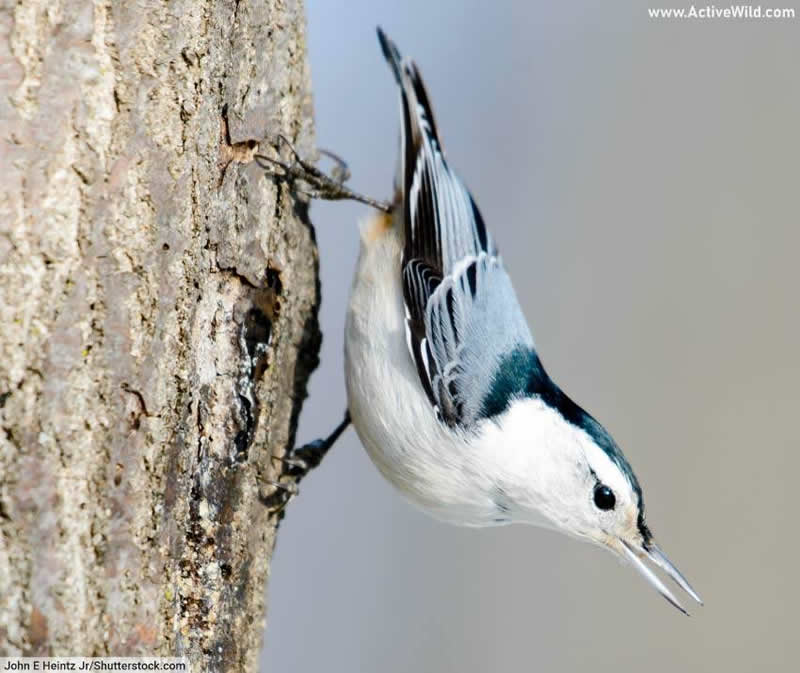
Nuthatches are small woodland birds that are often seen hopping up and down tree trunks. They have rounded bodies, short tails and long, powerful beaks.
There are 28 species of nuthatch. They make up the genus Sitta, the sole genus in the family Sittidae.
Most nuthatches have grey or gray-blue backs, pale white, yellow or chestnut undersides, and distinctive black eye stripes.
Discover More With Active Wild
You can find out more about birds on this page: Birds: The Ultimate Guide
You can find out about the different types of bird on this page: Types Of Bird
Return to page index
Nutria
Scientific name: Myocastor coypus
Type of animal: Mammal
Family: Echimyidae
Where found: South America (Introduced to North America, Eurasia, Africa)
Conservation status: Least Concern
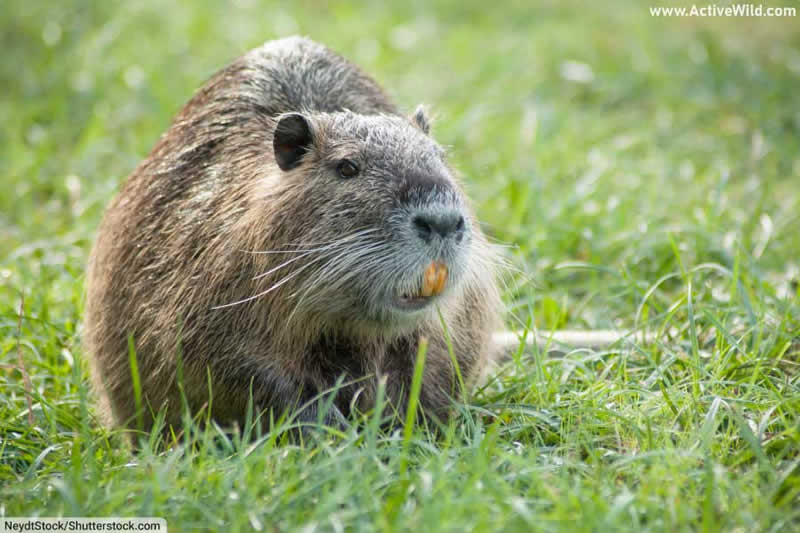
The nutria is a large rodent also known as the coypu. Somewhere between a beaver and a large rat in appearance, the nutria has thick brown hair and a distinctive patch of white fur around its mouth and nose.
The nutria lives in wetland habitats, and is rarely found far from a river or other watercourse. Its webbed hind feet are an adaption for swimming.
Native to South America, the nutria has been introduced to regions of North America, Eurasia and Africa by fur farmers. Due to its disruptive burrowing and feeding, the species is considered a pest in many regions.
Discover More With Active Wild
You can find out more about rodents on this page: Rodents – The Ultimate Guide
Discover more amazing mammals on this page: Mammals List With Pictures & Facts
Return to page index
Nyala
Scientific name: Tragelaphus angasii
Type of animal: Mammal
Family: Bovidae
Where found: Africa
Conservation status: Least Concern
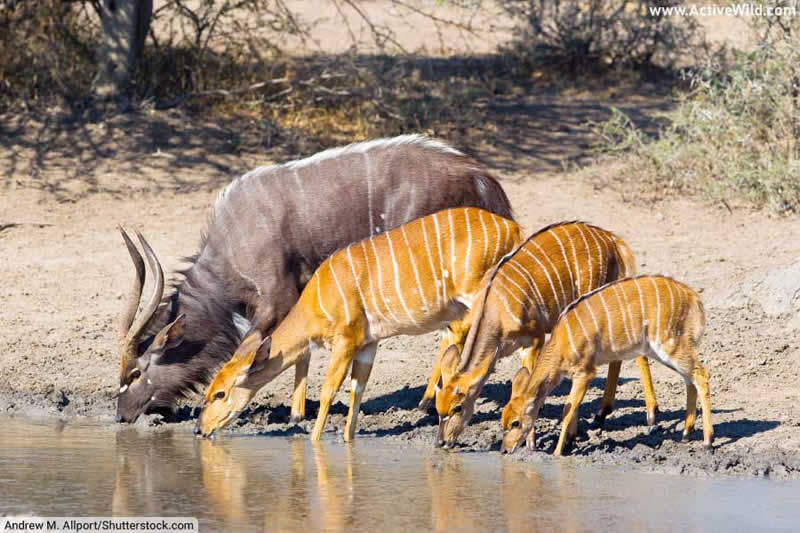
The nyala is a species of antelope found in the south-eastern African countries of Malawi, Mozambique, South Africa and Zimbabwe.
The species is found in dense woodlands, often near water.
The nyala is one of several antelopes in the tribe (a group of related animals) Tragelaphini, a group of hooved animals also known as spiral-horned antelopes on behalf of their distinctive spiraled horns.
Only the male nyala possesses horns, which can reach lengths of up to 83 cm / 33 in. There is substantial sexual dimorphism (difference in physical size or appearance) between male and female nyalas, with males weighing almost twice as much as females, and having darker, shaggier coats.
Both male and female nyalas have thin, vertical white stripes on their backs and flanks.
Discover More With Active Wild
You can see more African animals on this page: African Animals Pictures & Facts
Discover more amazing mammals on this page: Mammals List With Pictures & Facts
Return to page index
Animals That Start With N: Conclusion
We hope that you’ve discovered some interesting animals with names beginning with N on this page.
You can discover more animals in our A to Z animals section by clicking on the letters below…
The post Animals That Start With N, List With Pictures & Interesting Facts appeared first on Active Wild.


























